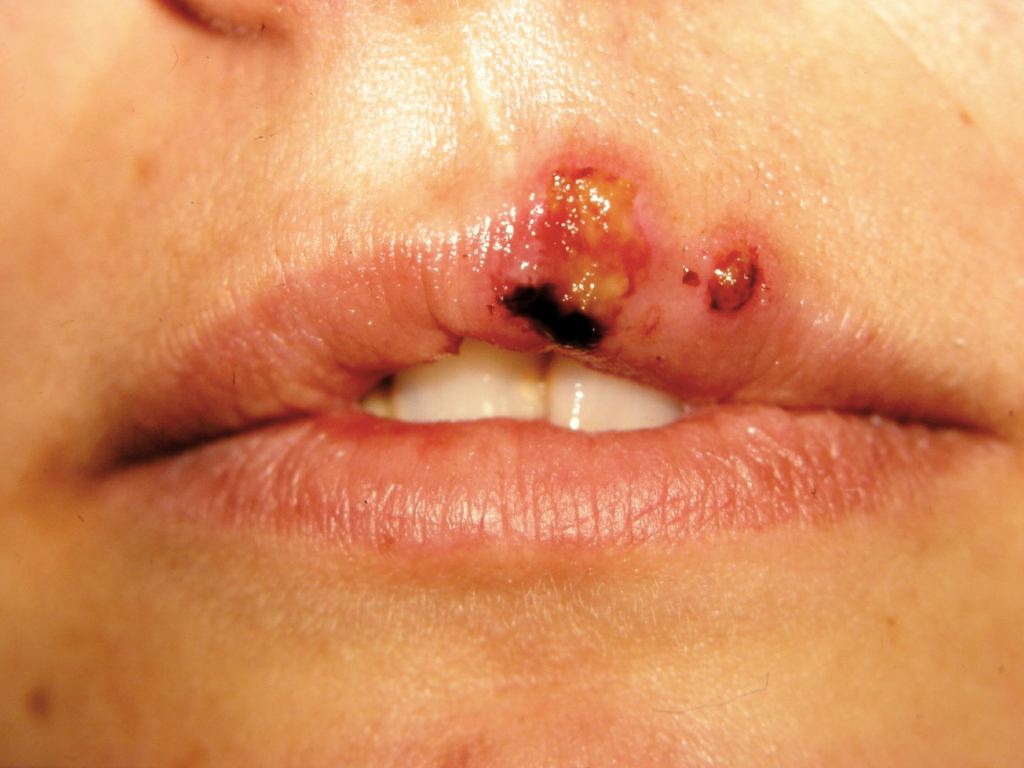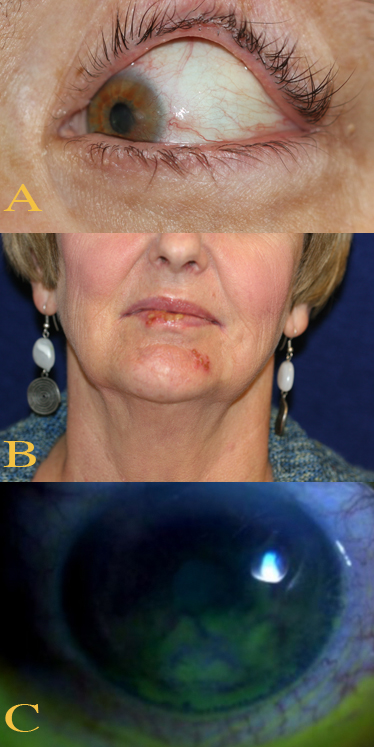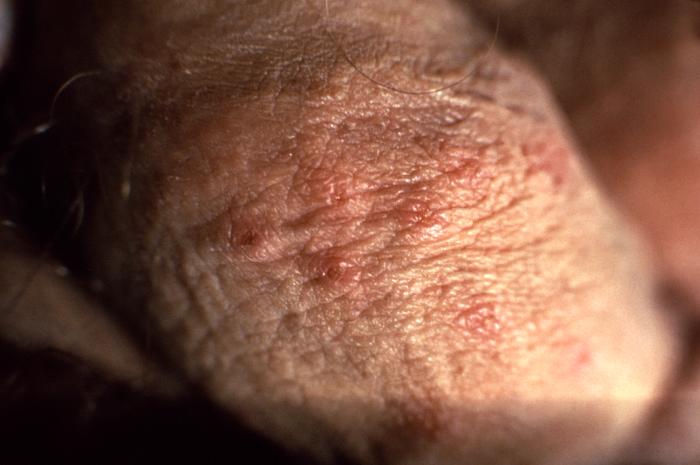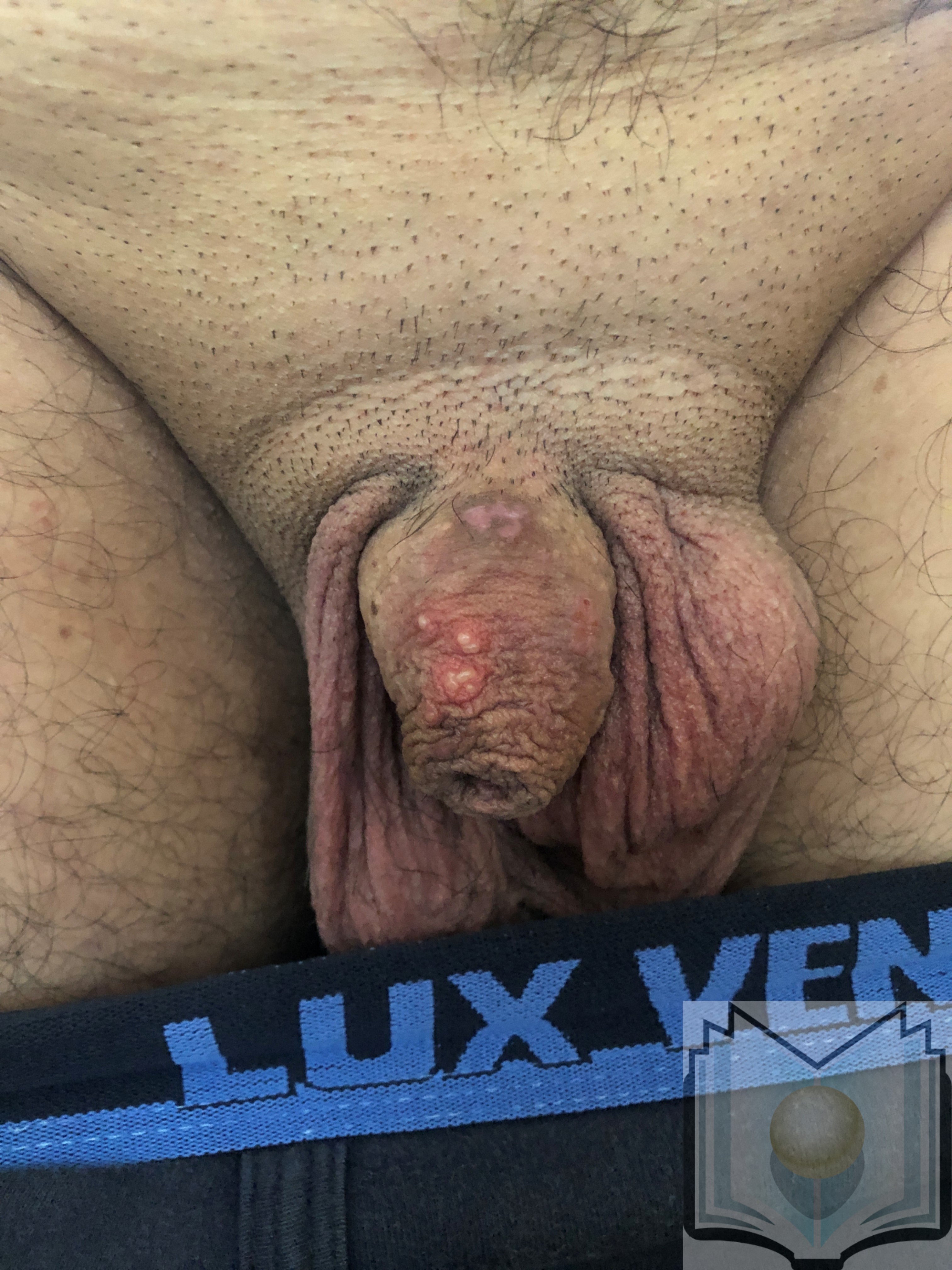[1]
Rechenchoski DZ, Faccin-Galhardi LC, Linhares REC, Nozawa C. Herpesvirus: an underestimated virus. Folia microbiologica. 2017 Mar:62(2):151-156. doi: 10.1007/s12223-016-0482-7. Epub 2016 Nov 17
[PubMed PMID: 27858281]
[2]
Soriano V, Romero JD. Rebound in Sexually Transmitted Infections Following the Success of Antiretrovirals for HIV/AIDS. AIDS reviews. 2018:20(4):187-204. doi: 10.24875/AIDSRev.18000034. Epub
[PubMed PMID: 30548023]
[3]
Mostafa HH, Thompson TW, Konen AJ, Haenchen SD, Hilliard JG, Macdonald SJ, Morrison LA, Davido DJ. Herpes Simplex Virus 1 Mutant with Point Mutations in UL39 Is Impaired for Acute Viral Replication in Mice, Establishment of Latency, and Explant-Induced Reactivation. Journal of virology. 2018 Apr 1:92(7):. doi: 10.1128/JVI.01654-17. Epub 2018 Mar 14
[PubMed PMID: 29321311]
[4]
Pfaff F, Groth M, Sauerbrei A, Zell R. Genotyping of herpes simplex virus type 1 by whole-genome sequencing. The Journal of general virology. 2016 Oct:97(10):2732-2741. doi: 10.1099/jgv.0.000589. Epub 2016 Aug 24
[PubMed PMID: 27558891]
[5]
van Oeffelen L, Biekram M, Poeran J, Hukkelhoven C, Galjaard S, van der Meijden W, Op de Coul E. Update on Neonatal Herpes Simplex Epidemiology in the Netherlands: A Health Problem of Increasing Concern? The Pediatric infectious disease journal. 2018 Aug:37(8):806-813. doi: 10.1097/INF.0000000000001905. Epub
[PubMed PMID: 29356762]
[6]
Chaabane S, Harfouche M, Chemaitelly H, Schwarzer G, Abu-Raddad LJ. Herpes simplex virus type 1 epidemiology in the Middle East and North Africa: systematic review, meta-analyses, and meta-regressions. Scientific reports. 2019 Feb 4:9(1):1136. doi: 10.1038/s41598-018-37833-8. Epub 2019 Feb 4
[PubMed PMID: 30718696]
Level 1 (high-level) evidence
[7]
Fedoreyev SA, Krylova NV, Mishchenko NP, Vasileva EA, Pislyagin EA, Iunikhina OV, Lavrov VF, Svitich OA, Ebralidze LK, Leonova GN. Antiviral and Antioxidant Properties of Echinochrome A. Marine drugs. 2018 Dec 15:16(12):. doi: 10.3390/md16120509. Epub 2018 Dec 15
[PubMed PMID: 30558297]
[8]
Jiang Y, Leib D. Preventing neonatal herpes infections through maternal immunization. Future virology. 2017 Dec:12(12):709-711. doi: 10.2217/fvl-2017-0105. Epub
[PubMed PMID: 29339967]
[9]
Marchi S, Trombetta CM, Gasparini R, Temperton N, Montomoli E. Epidemiology of herpes simplex virus type 1 and 2 in Italy: a seroprevalence study from 2000 to 2014. Journal of preventive medicine and hygiene. 2017 Mar:58(1):E27-E33
[PubMed PMID: 28515628]
[10]
Finger-Jardim F, Avila EC, da Hora VP, Gonçalves CV, de Martinez AMB, Soares MA. Prevalence of herpes simplex virus types 1 and 2 at maternal and fetal sides of the placenta in asymptomatic pregnant women. American journal of reproductive immunology (New York, N.Y. : 1989). 2017 Jul:78(1):. doi: 10.1111/aji.12689. Epub 2017 Apr 25
[PubMed PMID: 28440579]
[11]
Rosenberg J, Galen BT. Recurrent Meningitis. Current pain and headache reports. 2017 Jul:21(7):33. doi: 10.1007/s11916-017-0635-7. Epub
[PubMed PMID: 28551737]
[12]
Cruz AT, Freedman SB, Kulik DM, Okada PJ, Fleming AH, Mistry RD, Thomson JE, Schnadower D, Arms JL, Mahajan P, Garro AC, Pruitt CM, Balamuth F, Uspal NG, Aronson PL, Lyons TW, Thompson AD, Curtis SJ, Ishimine PT, Schmidt SM, Bradin SA, Grether-Jones KL, Miller AS, Louie J, Shah SS, Nigrovic LE, HSV Study Group of the Pediatric Emergency Medicine Collaborative Research Committee. Herpes Simplex Virus Infection in Infants Undergoing Meningitis Evaluation. Pediatrics. 2018 Feb:141(2):. doi: 10.1542/peds.2017-1688. Epub 2018 Jan 3
[PubMed PMID: 29298827]
[13]
Zhang J, Liu H, Wei B. Immune response of T cells during herpes simplex virus type 1 (HSV-1) infection. Journal of Zhejiang University. Science. B. 2017 Apr.:18(4):277-288. doi: 10.1631/jzus.B1600460. Epub
[PubMed PMID: 28378566]
[14]
Giraldo D, Wilcox DR, Longnecker R. The Type I Interferon Response and Age-Dependent Susceptibility to Herpes Simplex Virus Infection. DNA and cell biology. 2017 May:36(5):329-334. doi: 10.1089/dna.2017.3668. Epub 2017 Mar 9
[PubMed PMID: 28278385]
[15]
Rajasagi NK, Rouse BT. Application of our understanding of pathogenesis of herpetic stromal keratitis for novel therapy. Microbes and infection. 2018 Oct-Nov:20(9-10):526-530. doi: 10.1016/j.micinf.2017.12.014. Epub 2018 Jan 9
[PubMed PMID: 29329934]
Level 3 (low-level) evidence
[16]
Bin L, Li X, Richers B, Streib JE, Hu JW, Taylor P, Leung DYM. Ankyrin repeat domain 1 regulates innate immune responses against herpes simplex virus 1: A potential role in eczema herpeticum. The Journal of allergy and clinical immunology. 2018 Jun:141(6):2085-2093.e1. doi: 10.1016/j.jaci.2018.01.001. Epub 2018 Jan 31
[PubMed PMID: 29371118]
[17]
Darji K, Frisch S, Adjei Boakye E, Siegfried E. Characterization of children with recurrent eczema herpeticum and response to treatment with interferon-gamma. Pediatric dermatology. 2017 Nov:34(6):686-689. doi: 10.1111/pde.13301. Epub
[PubMed PMID: 29144049]
[18]
Wei EY, Coghlin DT. Beyond Folliculitis: Recognizing Herpes Gladiatorum in Adolescent Athletes. The Journal of pediatrics. 2017 Nov:190():283. doi: 10.1016/j.jpeds.2017.06.062. Epub 2017 Jul 17
[PubMed PMID: 28728810]
[19]
Williams C, Wells J, Klein R, Sylvester T, Sunenshine R, Centers for Disease Control and Prevention (CDC). Notes from the field: outbreak of skin lesions among high school wrestlers--Arizona, 2014. MMWR. Morbidity and mortality weekly report. 2015 May 29:64(20):559-60
[PubMed PMID: 26020140]
[20]
Kolawole OM, Amuda OO, Nzurumike C, Suleiman MM, Ikhevha Ogah J. Seroprevalence and Co-Infection of Human Immunodeficiency Virus (HIV) and Herpes Simplex Virus (HSV) Among Pregnant Women in Lokoja, North-Central Nigeria. Iranian Red Crescent medical journal. 2016 Oct:18(10):e25284. doi: 10.5812/ircmj.25284. Epub 2016 Aug 10
[PubMed PMID: 28180012]
[21]
El Hayderi L, Rübben A, Nikkels AF. The alpha-herpesviridae in dermatology : Herpes simplex virus types I and II. Der Hautarzt; Zeitschrift fur Dermatologie, Venerologie, und verwandte Gebiete. 2017 Dec:68(Suppl 1):1-5. doi: 10.1007/s00105-016-3919-7. Epub
[PubMed PMID: 28197698]
[22]
Shenoy R, Mostow E, Cain G. Eczema herpeticum in a wrestler. Clinical journal of sport medicine : official journal of the Canadian Academy of Sport Medicine. 2015 Jan:25(1):e18-9. doi: 10.1097/JSM.0000000000000097. Epub
[PubMed PMID: 24714395]
[23]
Li Z, Breitwieser FP, Lu J, Jun AS, Asnaghi L, Salzberg SL, Eberhart CG. Identifying Corneal Infections in Formalin-Fixed Specimens Using Next Generation Sequencing. Investigative ophthalmology & visual science. 2018 Jan 1:59(1):280-288. doi: 10.1167/iovs.17-21617. Epub
[PubMed PMID: 29340642]
[24]
El Hayderi L, Rübben A, Nikkels AF. [The alpha-herpesviridae in dermatology : Herpes simplex virus types I and II. German version]. Der Hautarzt; Zeitschrift fur Dermatologie, Venerologie, und verwandte Gebiete. 2017 Mar:68(3):181-186. doi: 10.1007/s00105-016-3929-5. Epub
[PubMed PMID: 28197699]
[25]
Sanders JE, Garcia SE. Pediatric herpes simplex virus infections: an evidence-based approach to treatment. Pediatric emergency medicine practice. 2014 Jan:11(1):1-19; quiz 19
[PubMed PMID: 24649621]
[26]
Kalogeropoulos D, Geka A, Malamos K, Kanari M, Kalogeropoulos C. New Therapeutic Perceptions in a Patient with Complicated Herpes Simplex Virus 1 Keratitis: A Case Report and Review of the Literature. The American journal of case reports. 2017 Dec 27:18():1382-1389
[PubMed PMID: 29279602]
Level 3 (low-level) evidence
[27]
Anderson BJ, McGuire DP, Reed M, Foster M, Ortiz D. Prophylactic Valacyclovir to Prevent Outbreaks of Primary Herpes Gladiatorum at a 28-Day Wrestling Camp: A 10-Year Review. Clinical journal of sport medicine : official journal of the Canadian Academy of Sport Medicine. 2016 Jul:26(4):272-8. doi: 10.1097/JSM.0000000000000255. Epub
[PubMed PMID: 26540599]
[28]
Mir-Bonafé JM, Román-Curto C, Santos-Briz A, Palacios-Álvarez I, Santos-Durán JC, Fernández-López E. Eczema herpeticum with herpetic folliculitis after bone marrow transplant under prophylactic acyclovir: are patients with underlying dermatologic disorders at higher risk? Transplant infectious disease : an official journal of the Transplantation Society. 2013 Apr:15(2):E75-80. doi: 10.1111/tid.12058. Epub 2013 Feb 6
[PubMed PMID: 23387866]
[29]
Gottlieb SL, Giersing BK, Hickling J, Jones R, Deal C, Kaslow DC, HSV Vaccine Expert Consultation Group. Meeting report: Initial World Health Organization consultation on herpes simplex virus (HSV) vaccine preferred product characteristics, March 2017. Vaccine. 2019 Nov 28:37(50):7408-7418. doi: 10.1016/j.vaccine.2017.10.084. Epub 2017 Dec 8
[PubMed PMID: 29224963]





